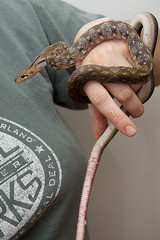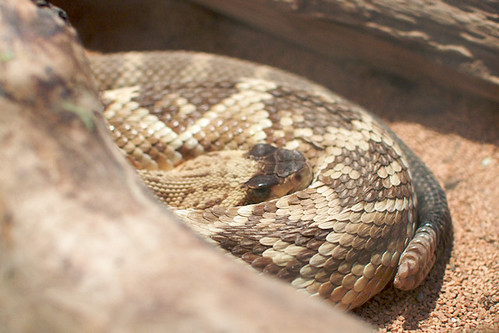More on authors, delays, and fans
This thing about George R. R. Martin and some of his fans (i.e., their nasty reaction to the delay in his next book) has generated some interesting blog entries by his fellow writers. Charlie Stross says he’s “slacking” because he went shopping at IKEA. In another one of those entries that will probably end up between hard covers, John Scalzi outlines 10 things to remember about authors — in a nutshell, that authors are human beings with lives and shit that needs dealing with. And Patrick Rothfuss steps up to the plate with this great entry explaining exactly why his sequel to The Name of the Wind isn’t done yet, illustrated with funny cartoons depicting some of the e-mail he’s been getting. (GRRM: “I have received every one of those emails as seen in Pat’s cartoons. Many times over.”)
Rothfuss writes a great, funny blog — I may have to read his book. Fortunately we have a copy.





 If you think a green anaconda or a reticulated python is too large for comfort, be glad you didn’t live 60 million years ago. Then you would have had to deal with Titanoboa cerrejonensis. While modern snakes max out at 10 or 11 metres in length, Titanoboa is estimated to have been a mind-boggling 13 metres long and to have weighed more than a ton. The fossil boa was discovered in a coal mine in northeastern Colombia, and is described in this week’s issue of Nature.
If you think a green anaconda or a reticulated python is too large for comfort, be glad you didn’t live 60 million years ago. Then you would have had to deal with Titanoboa cerrejonensis. While modern snakes max out at 10 or 11 metres in length, Titanoboa is estimated to have been a mind-boggling 13 metres long and to have weighed more than a ton. The fossil boa was discovered in a coal mine in northeastern Colombia, and is described in this week’s issue of Nature.